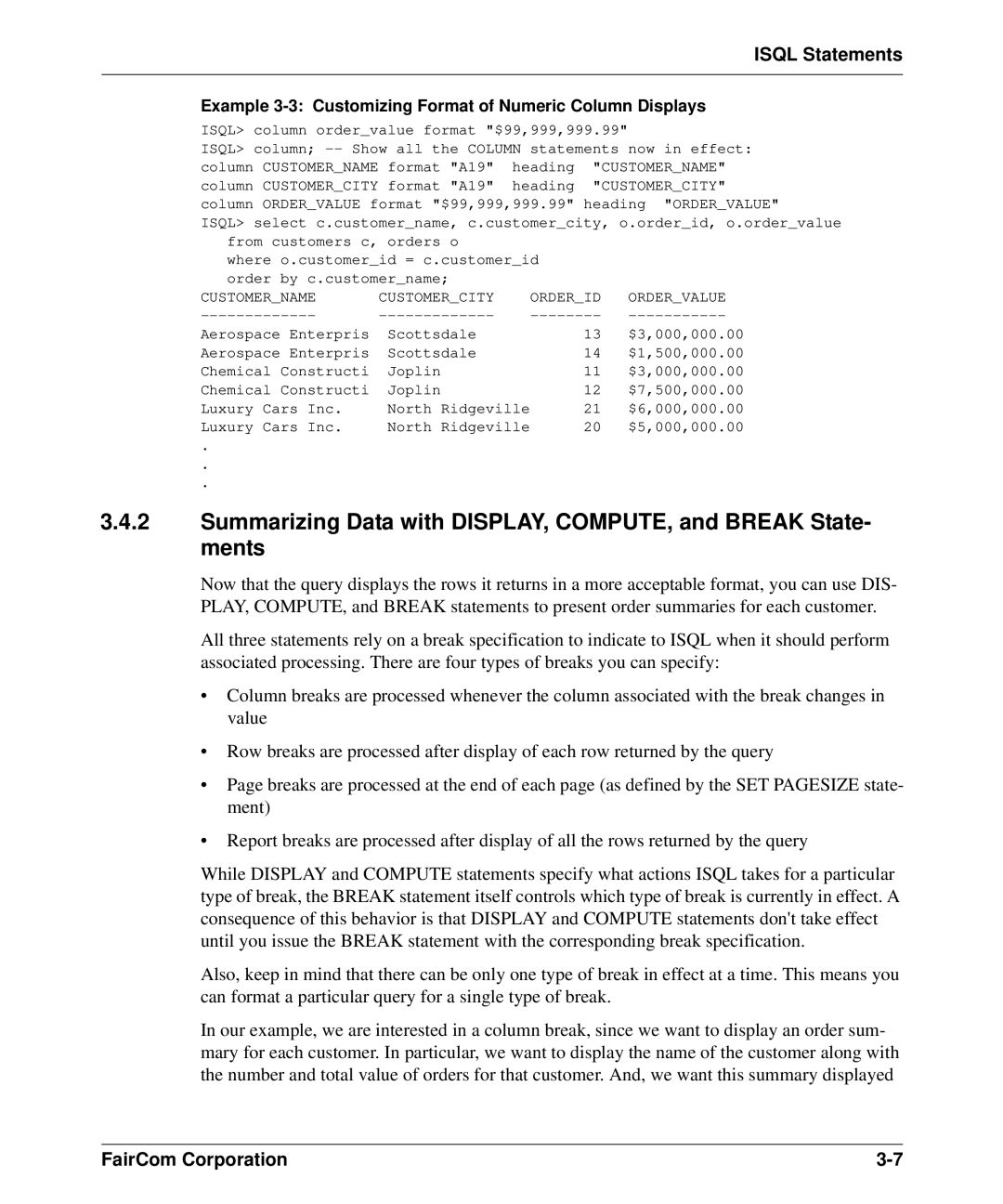
ISQL Statements
Example 3-3: Customizing Format of Numeric Column Displays
ISQL> column order_value format "$99,999,999.99"
ISQL> column;
ISQL> select c.customer_name, c.customer_city, o.order_id, o.order_value
from customers c, | orders o |
|
|
where o.customer_id = c.customer_id |
| ||
order by c.customer_name; | ORDER_ID | ORDER_VALUE | |
CUSTOMER_NAME | CUSTOMER_CITY | ||
Aerospace Enterpris | Scottsdale | 13 | $3,000,000.00 |
Aerospace Enterpris | Scottsdale | 14 | $1,500,000.00 |
Chemical Constructi | Joplin | 11 | $3,000,000.00 |
Chemical Constructi | Joplin | 12 | $7,500,000.00 |
Luxury Cars Inc. | North Ridgeville | 21 | $6,000,000.00 |
Luxury Cars Inc. | North Ridgeville | 20 | $5,000,000.00 |
. |
|
|
|
. |
|
|
|
. |
|
|
|
3.4.2Summarizing Data with DISPLAY, COMPUTE, and BREAK State- ments
Now that the query displays the rows it returns in a more acceptable format, you can use DIS- PLAY, COMPUTE, and BREAK statements to present order summaries for each customer.
All three statements rely on a break specification to indicate to ISQL when it should perform associated processing. There are four types of breaks you can specify:
•Column breaks are processed whenever the column associated with the break changes in value
•Row breaks are processed after display of each row returned by the query
•Page breaks are processed at the end of each page (as defined by the SET PAGESIZE state- ment)
•Report breaks are processed after display of all the rows returned by the query
While DISPLAY and COMPUTE statements specify what actions ISQL takes for a particular type of break, the BREAK statement itself controls which type of break is currently in effect. A consequence of this behavior is that DISPLAY and COMPUTE statements don't take effect until you issue the BREAK statement with the corresponding break specification.
Also, keep in mind that there can be only one type of break in effect at a time. This means you can format a particular query for a single type of break.
In our example, we are interested in a column break, since we want to display an order sum- mary for each customer. In particular, we want to display the name of the customer along with the number and total value of orders for that customer. And, we want this summary displayed
FairCom Corporation |
